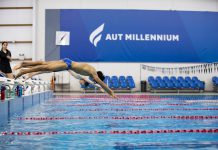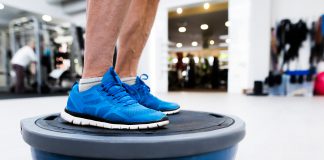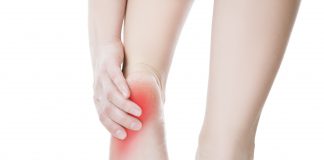New project to build a greater understanding of the changes pregnant women undergo in body size, shape and balance.
AUT is looking for women who are pregnant to take part in a new study at AUT Millennium.
Movement and exercise during pregnancy make for a safer and healthier outcome for mothers and babies. However, due to changing body shape, individual women/wāhine can experience an increased risk of falls making them uncertain about exercise, during and post-pregnancy.
Physical Evolution through Pregnancy (TK-PEP) investigates this issue with the aim to improve pregnancy outcomes for women and whānau. Researchers will work with up to 400 pregnant women to develop a greater understanding of the changes they undergo in body shape, size and vital signs, during and after pregnancy.
“A women’s body undergoes unique progressive changes in shape and size throughout pregnancy and in the six months after the birth. While it’s generally accepted that these physical changes affect the way women walk, balance, exercise and carry out daily tasks, we have limited insight into how these changes evolve across time, and how they differ between women,” says TK-PEP research leader Professor Patria Hume. “We hope that as women learn more about how their bodies change, they will gain confidence in how they move and maintain their balance, which will lead to improved health care outcomes: both physical and mental.”
Researchers hope that a greater understanding of physical changes might eventually reduce the need for medical intervention at birth. Around one-third of New Zealand women having a baby undergo a caesarean section or instrumental birth (forceps/ventouse). In 2018, a Ministry of Health Maternity report showed that 36 per cent of women had a caesarean section delivery, more than twice the WHO recommendation of fifteen per cent. TK-PEP midwifery team leader Professor Judith McAra-Couper says, “We hope to find ways to change this trend so more women can have a vaginal birth.”
The research will take place monthly at AUT Millennium, with checks for heart rate, blood pressure, temperature, respiration rate, oxygen saturation and changes in body shape and movement. Changing body mass will be captured in a 3D whole-body imaging scanner and motion capture technology will be used to assess walking and balance. One study includes free birth preparation workshops based on movement therapy. These workshops aim to help expectant mothers physically and emotionally for their labour and birth. Participants will also receive nutritional analysis and have access to a Te Kukunetanga whānau room.
“It’s an opportunity to connect with a range of health professionals between scheduled appointments and attend participant-only wellbeing seminars from a variety of experts on topics such as nutrition, exercise and physical activity,” says Professor Hume. To participate in TK-PEP or for more information see the website or contact the project coordinator Dee Holdsworth-Perks on [email protected], mobile 021 0511 579.
Te Kukunetanga
TK-PEP is the first project in a larger, overarching research programme, Te Kukunetanga (Developing Cycle of Life); a partnership including AUT SPRINZ (Sport Performance Research Institute of New Zealand), the AUT Centre for Midwifery and Women’s Health Research, the Te Kākano Network for Physical Activity and Sport Research, AUT Te Ipukarea (National Māori Language Institute), and the NZ Defence Force.
The full Te Kukunetanga programme will run over multiple years and includes the following projects:
- Physical Evolution through Pregnancy
- The Connection of Motion and Emotion during Pregnancy
- Postural Control during Pregnancy
- Using Predictive Modelling to Improve Health Outcomes
- Visual Perception of Space during Pregnancy
- Foods Consumed during Pregnancy
- Running during Pregnancy
- Post-pregnancy Return to Duty Guideline for the Military
- Maternal Psychological well-being during and post-Pregnancy





































